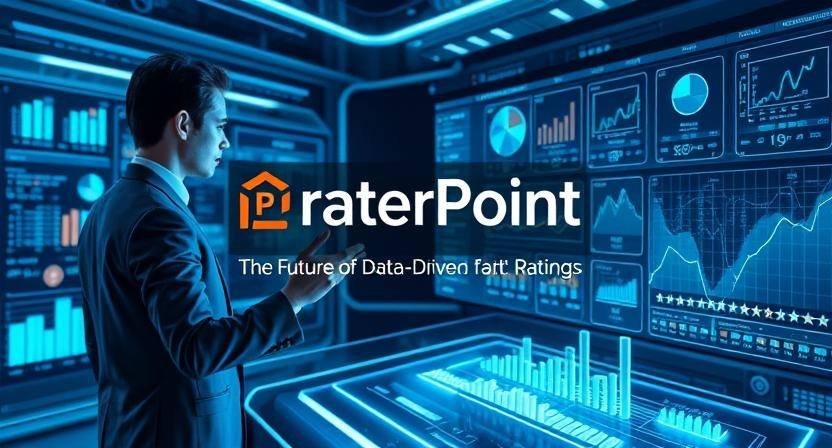In a world where digital is the norm, the speed at which information is shared has changed the way people look at products, services, and content. Rating and feedback-giving platforms have become the core of decision-making for businesses and consumers alike. Among these changing instruments, RaterPoint
has become a new-generation system for performance evaluation and credibility assessment — one that is changing the way we measure quality across industries.
What really is RaterPoint, and why is it becoming so influential? This article surveys RaterPoint’s organisation, occurrences, benefits, and potential to impact sectors such as e-commerce, digital marketing, education, and freelancing.
Understanding RaterPoint
RaterPoint is a single platform or system that can be seen as a meta-entity that evaluates other entities—such as businesses, people, or digital content — based on a specific set of criteria. In essence, it is a measurement system that uses both numerical and descriptive metrics, i.e., it evaluates consumer goods, activities, and online services while considering factors such as trust, efficiency, and customer satisfaction.
The program is intended to be a standardised quality evaluation instrument, thus setting a standard for authenticity and creditworthiness in the virtual world. Companies use it as a tool to measure service quality, while customers rely on it to make more informed choices.
How RaterPoint Works
RaterPoint makes its decisions based on user-provided information, AI-powered analytics, and expert evaluation. The tool’s setup follows a clear logic to ensure correctness, openness, and the ability to be updated. Its working principle is clarified in a few simplified points.
- Data Collection: The software retrieves the required data from sources such as user feedback, expert reviews, and automated systems.
- Evaluation Framework: It locates data for analysis based on parameters such as reliability, accuracy, and user experience.
- Weighted Scoring System: To balance the score in a fair, measured way, each element is assigned a weight.
- Aggregation and Reporting: The final rating, derived by merging all individual scores, is visible to both users and organisations.
- Continuous Updates: The technology continually updates itself through user feedback and machine learning to remain accurate and relevant.
With this layout, RaterPoint remains a powerful tool for managing data that is consistent, unbiased, and actionable.
Applications of RaterPoint
1. Digital Marketing and SEO
In the digital marketing realm, RaterPoint is an instrumental resource for measuring factors such as consumer involvement, brand awareness, and content value. High scores achieved through RaterPoint can effectively enhance search engine optimisation (SEO) and make a website more trustworthy to visitors.
- Websites that achieve strong RaterPoint scores become more visible to people searching for them.
- Marketers get detailed insights into user engagement and content performance.
- RaterPoint insights help identify weak points for campaign optimisation.
By using RaterPoint metrics, brands cannot only secure a strong digital reputation but also reach a larger share of their target audience.
2. E-Commerce and Product Reviews
Trust is the foundation of a successful e-commerce business model. RaterPoint is a tool that lets users rate a product using verified reviews and expert opinions.
- The number assigned to a product by RaterPoint determines how many sales it will make.
- Companies can collect customer satisfaction data through RaterPoint.
- Complex algorithms play a significant role in detecting and authenticating fake reviews.
E-commerce can increase customer loyalty through transparent business practices and community engagement, enabled by RaterPoint technology.
3. Content Creation and Quality Control
The point that RaterPoint makes, to the extent that the content is like that of bloggers, YouTubers, and digital publishers, is that it is one of the measurable aspects that RaterPoint presents through technology, such as engagement, creativity, and audience impact.
- Content gets the highest User Engagement Score and thus earns a superior RaterPoint ranking.
- AI-based analytics tools are quick to detect copied content and can thus attest to the authenticity and creative value of original works.
- The data will help content creators stay in line with the audience when deciding future content themes.
In this way, RaterPoint expands the creative capacity of digital content producers, enabling them to create high-quality, influential, and authentic content for their target audience.
4. Education and Learning Platforms
The use of RaterPoint in the education field has been expanded to evaluate e-learning courses, instructors, and academic performance.
- Courses with high RaterPoint scores are acknowledged as having superior content and yielding excellent learning outcomes.
- Schools can make the most of RaterPoint data to plan their teaching and engage students more effectively.
- Teachers can also assess a course’s success and make instructional changes based on the evidence provided.
By applying RaterPoint standards, education providers build more effective and learner-centred digital environments.
5. Online Job Platforms and Freelancer Ratings
Ratings have been a very important factor in determining trust and credibility in the freelancing and gig economy.
- RaterPoint enables employers and freelancers to produce fair, data-backed assessments.
- Freelancers who have earned high scores from RaterPoint are in a position to access more collaboration opportunities.
- Employers can verify an applicant’s authenticity while avoiding fraudulent situations.
Support for AI technologies enhances skills assessment and improves performance benchmarking. In this way, RaterPoint amplifies the confidence and reliability of online job ecosystems.
Key Benefits of Using RaterPoint
-
Enhanced Trust and Credibility
Transparent and unbiased evaluations increase confidence among users, clients, and businesses. -
Improved Decision-Making
RaterPoint’s data-driven insights help organisations choose the best strategies and minimise risks. -
Continuous Improvement
Regular performance tracking motivates users and companies to improve quality and service standards. -
Fraud Detection and Fairness
AI algorithms identify review manipulation or rating fraud, maintaining fairness in evaluation. -
Stronger Market Competitiveness
High RaterPoint scores improve brand image and provide a competitive edge across industries.
Challenges and Limitations
While RaterPoint brings a lot of good things to the table, it also has some problems to deal with:
- Subjectivity and Bias: User ratings may be based on personal views rather than performance, which should be judged.
- Manipulative Practices: Some organisations may try to raise their scores artificially.
- Dependence on Quality Data: RaterPoint’s precision depends heavily on the provision of genuine, verified inputs.
- Industry Standardisation Missing: Each sector has its own specific requirements when it comes to evaluation models
Properly addressing these problems requires robust data validation systems, clear policies, and continuous checks.
The Future of RaterPoint
With advances in technology, RaterPoint is on its way to becoming a cutting-edge evaluation system powered by AI. Some of the changes are:
- Artificial Intelligence Integration: The algorithms will be more intelligent and can provide scores in real time based on context.
- Blockchain Verification: Ratings that cannot be tampered with and are visible to everyone for increased trust.
- Personalised Evaluation Metrics: Creating individual scoring systems that are adjusted to meet user or industry needs.
- Immersive Rating Experiences: Using AR and VR for the creation of more engaging and lifelike feedback environments.
All these changes make RaterPoint the core technology in quality assurance, digital trust, and performance measurement.
Conclusion
RaterPoint is far from being a mere rating system — it is a full-blown quality assessment framework designed for the digital age. By combining AI analysis, user-generated insights, and transparent scoring models, RaterPoint is making industries more accountable and opening the door to more imaginative decision-making possibilities.








